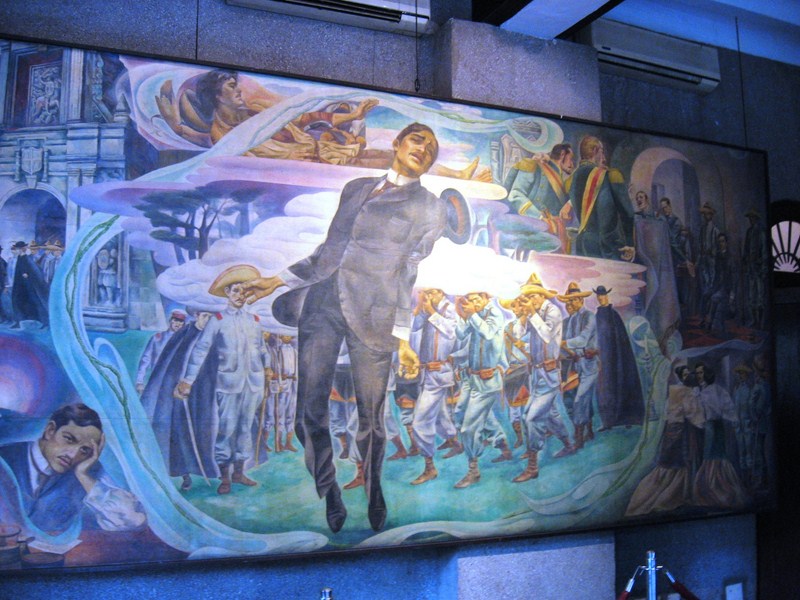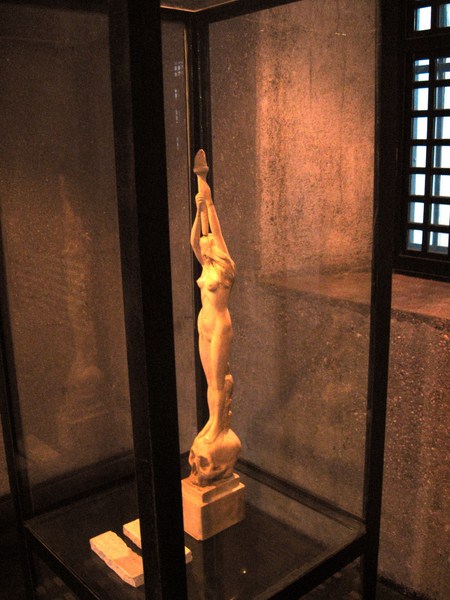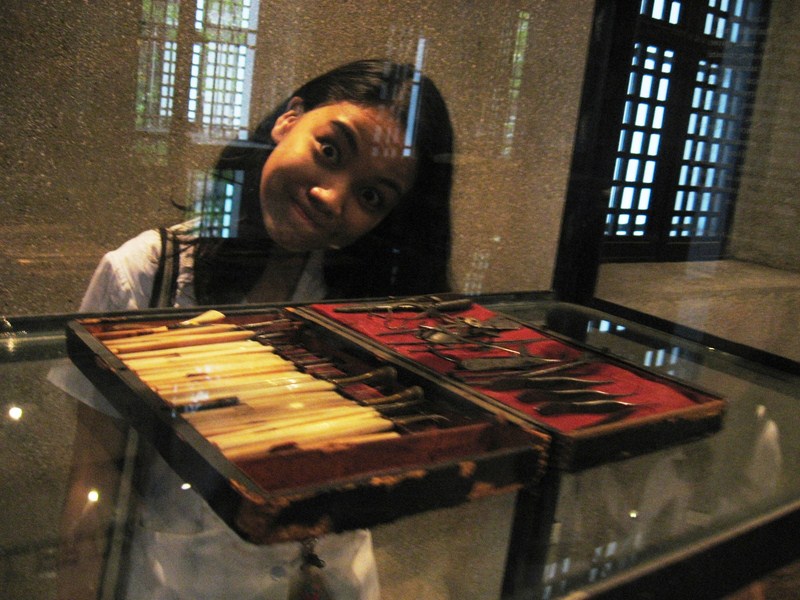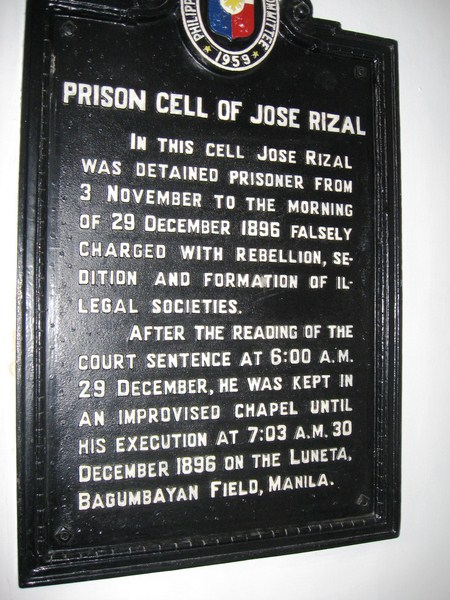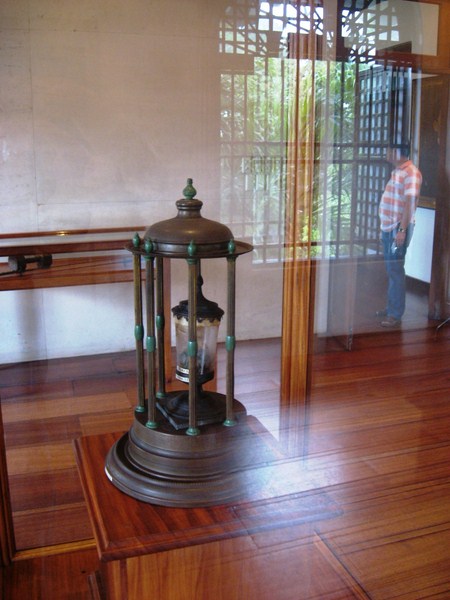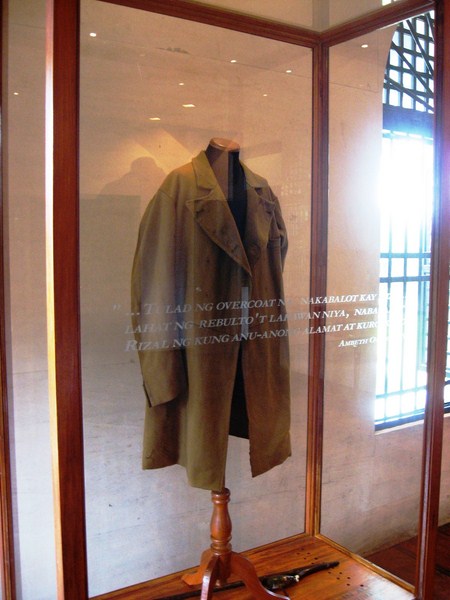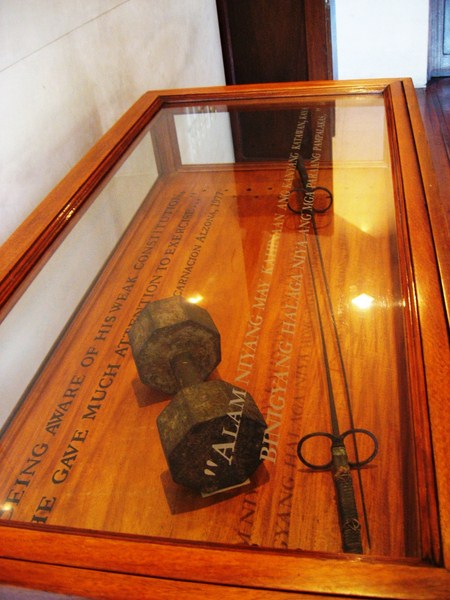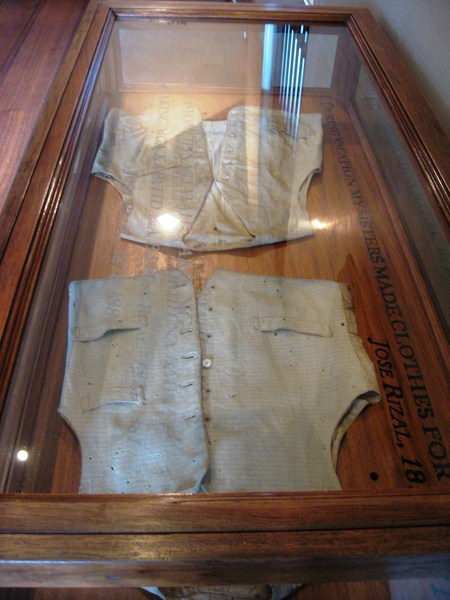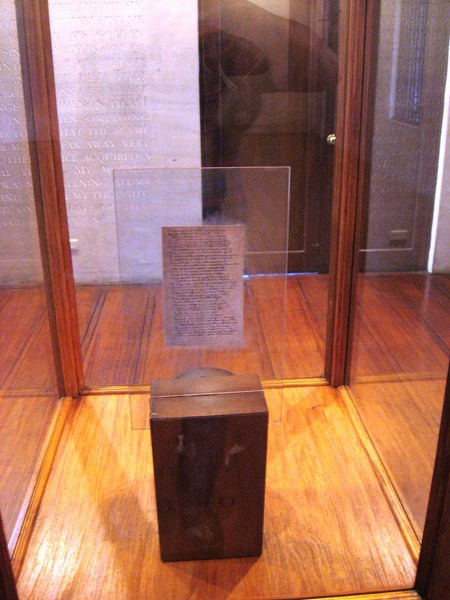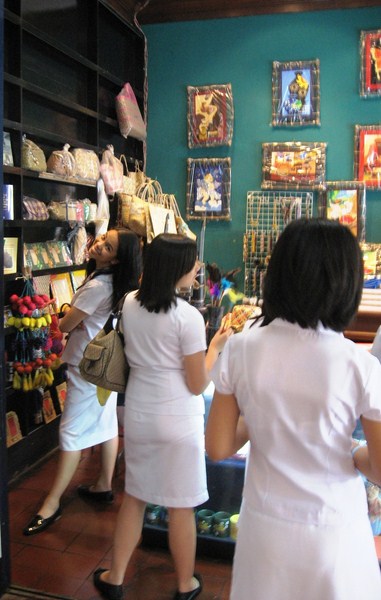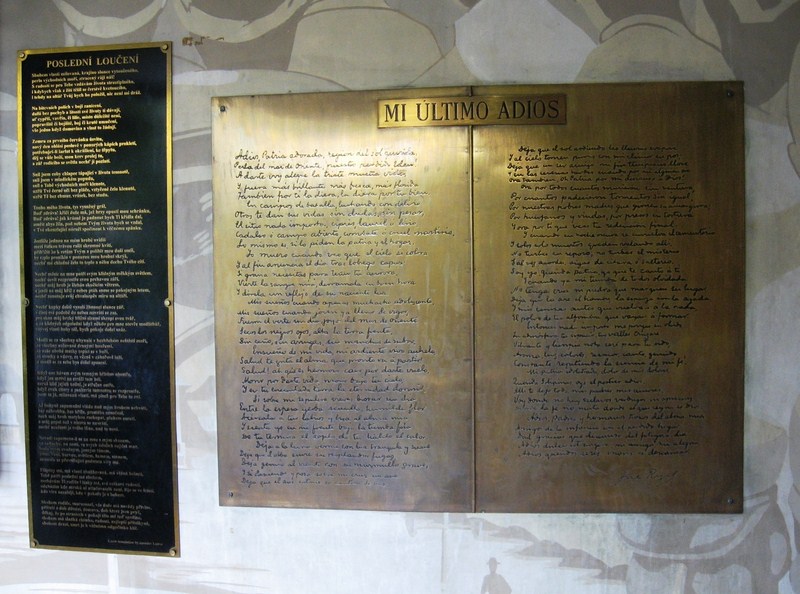The Rizal Shrine, Fort Santiago’s most prominent attraction, was the highlight of our tour. The shrine, housed in a restored (in 1953) 2-storey building formerly used as barracks for two Spanish artillery companies, remains under the supervision of the National Historical Institute (NHI).
National Hero Jose Rizal was imprisoned in an improvised “chapel cell” on one corner of its ground floor at the fort’s eastern side. Here, he was held for two months prior to his execution (November 3 to December 29, 1896) when his sentence was read at 6 A.M.. He also wrote his “Mi Ultimo Adios” (“My Last Farewell”) in this cell. As a prisoner condemned to death, he was moved into this church-like setting for spiritual contemplation. He was never confined in a dungeon unlike captured Katipunan members.
Upon entering the first room (Pagbukas ng Alaala), we were greeted by the late National Artist Carlos “Botong” V.Francisco’s commissioned mural (1961) of Rizal’s execution. Immediately to the right is the door leading to the airconditioned Bulwagan ng Panunulat(Chamber of Texts). Here are displayed old photos of Rizal’s parents, his sweetheart Leonor Rivera and of Rizal as a child and adult.
Reproductions of original sculptures done by Rizal, “Triumph of Science Over Death” (a torch-bearing Muse of Science standing over a skull) and “Prometheus Bound”, are also prominently displayed. On mounted steel plates are Rizal’s own opinions and analyses as well as those on Rizal done by various scholars.
Also on display here are faithful reproductions of Rizal’s handwritten manuscripts Noli Me Tangere(published in Berlin, 1887) and El Filibusterismo (published in Ghent, Belgium, 1891), his ophthalmological instruments (Rizal was an ophthalmic surgeon), his shell collection, his Hongkong calling cards, his chess and damaset and skeletons of frog (Rhacophorus rizali) and lizard (Draco rizali), both named after him.
Outside the room is the Galeriya ng Halamanan (Garden Gallery). On its right is the Silid ng Paninilay(Contemplation Room) which is interconnected to Rizal’s cell (Ang Piitan). The former was a pantry of food rations for Spanish troops (Cuarto de Menestra) before it was made into a receiving room for Rizal. The latter, a narrow, dark and nearly airless room, was formerly a storage for military supplies (Cuarto de Repuesto) before being converted to Rizal’s cell. Rizal’s untitled farewell poem was believed to have been written here. Inside is the familiar sitting wax statue of Rizal done by the late National Artist Guillermo E. Tolentino. Both rooms are closed to the public. Two of its doors are original.
To the left of the Garden Gallery is the Galeriya sa Hagdanan (Stairwell Gallery). Here on display, from the foot of the stairs all the way to the top, are oil paintings depicting key moments of Rizal’s life as visualized by painters (Romeo Enriquez, E. Gonzales, Rudy Herrera, etc.) who won in a painting competition during the centenary of Rizal’s birth (June 16, 1961).
Upon reaching the top of the stairs, we entered the Silid ng Nalalabi (Reliquary Room). Enshrined in a glass urn is the fort’s secular relic: a piece of Rizal’s vertebra with a bullet wound.
Other Rizal personal effects and relics on display in glass cases are two vests made by Rizal’s sisters (1878-81), a cerrada coat, a winter overcoat, fencing sword, dumbbell and walking cane.
The adjoining airconditioned, 18 meter by 8.5-m. room, Ang Tulang Walang-Hanggan (The Valedictory Poem) is nearly empty except for a glass case with Rizal’s original poem (written on both sides of a tiny piece of paper) and the alcohol burner where the poem was hidden. Rizal gave this stove to his sister Trinidad with word of its hidden content. The end of the wall facing the door is inscribed with the words of the “Mi Ultimo Adios” written in Spanish.
The last leg of the tour was the Galeriya sa Beranda (Veranda Gallery) where guests sign the guestbook. Its Museum Shop sells reproductions of old photos, old promotional posters of movies and VHS tapes on the life of Rizal as well as paper bills, medals, stamps, books, key chains, T-shirts and even a cross stitch, all emblazoned with Rizal’s likeness.
On the walls are plaques with Rizal’s “Mi Ultimo Adios” translated by individuals or groups into different languages : English (Nick Joaquin), Tagalog (Jose Gatmaytan), Korean (Korean Embassy), French (Jean-Claude Masson), Serbo-Croatian (“Povelja” Magazine) and Chinese (Shen Kwang Literary Association of the Philippines).
Translations in Romanian and Indonesian are found in the Garden Gallery.



